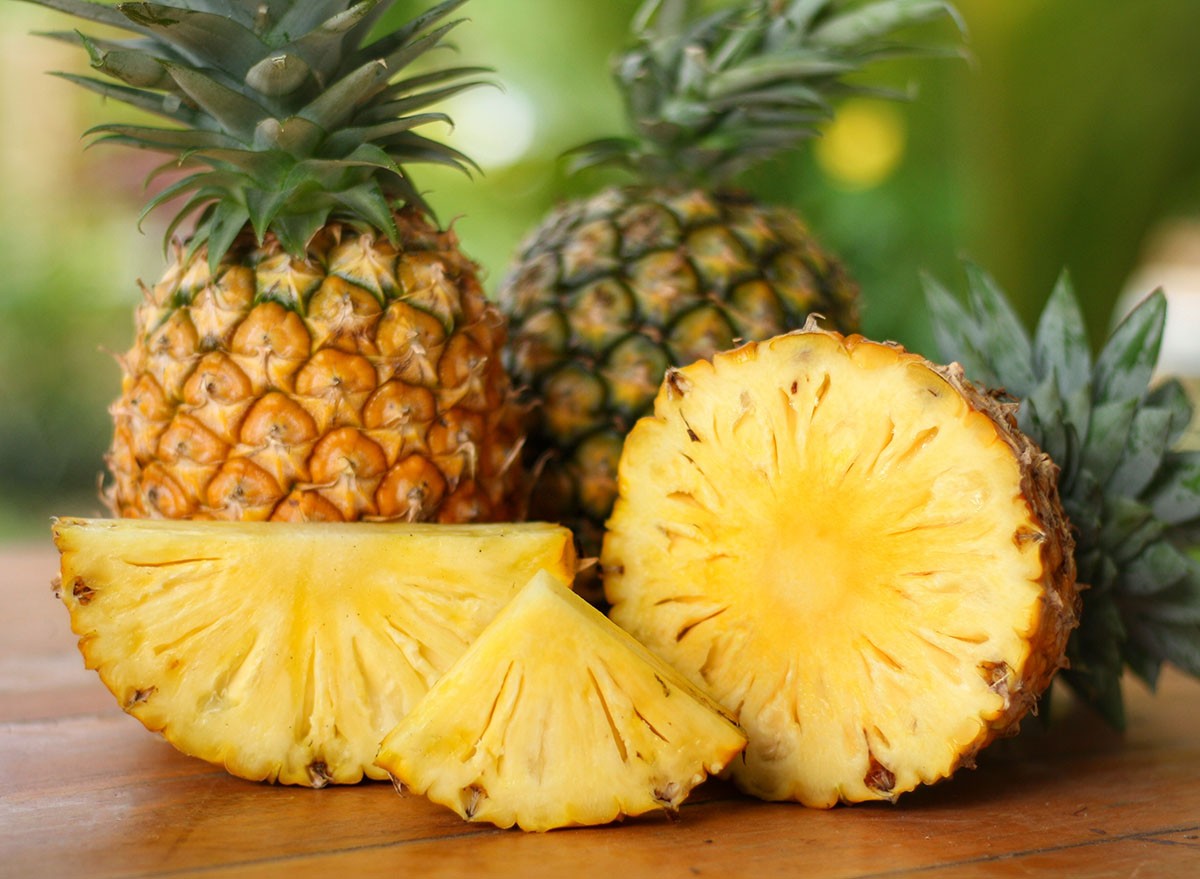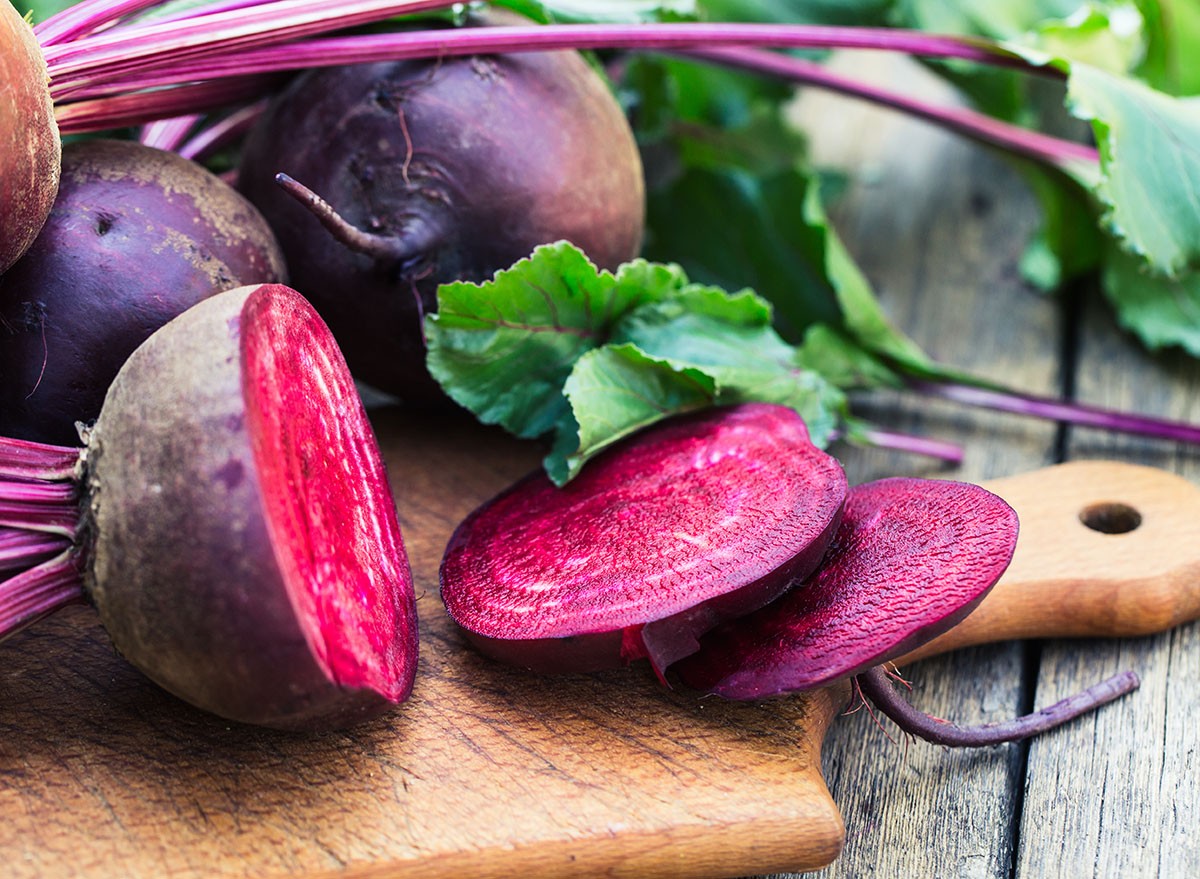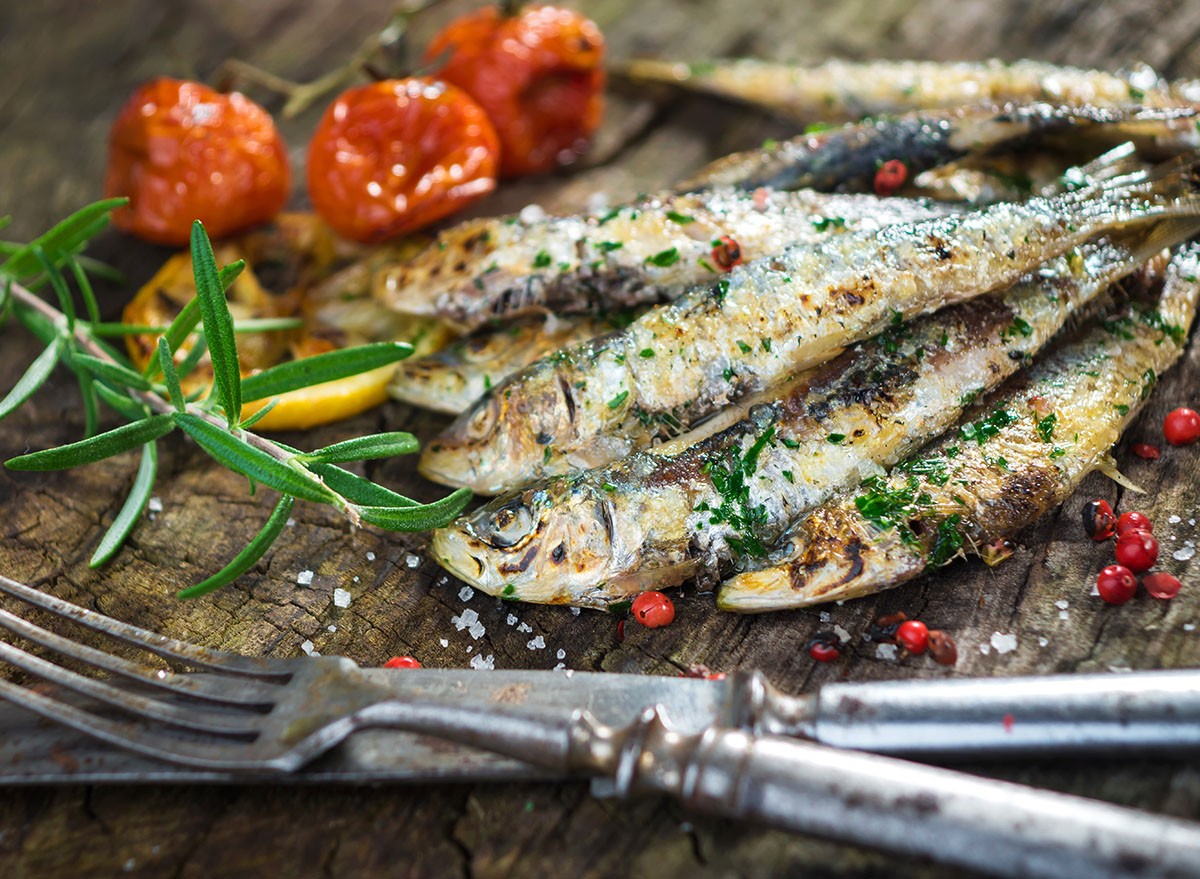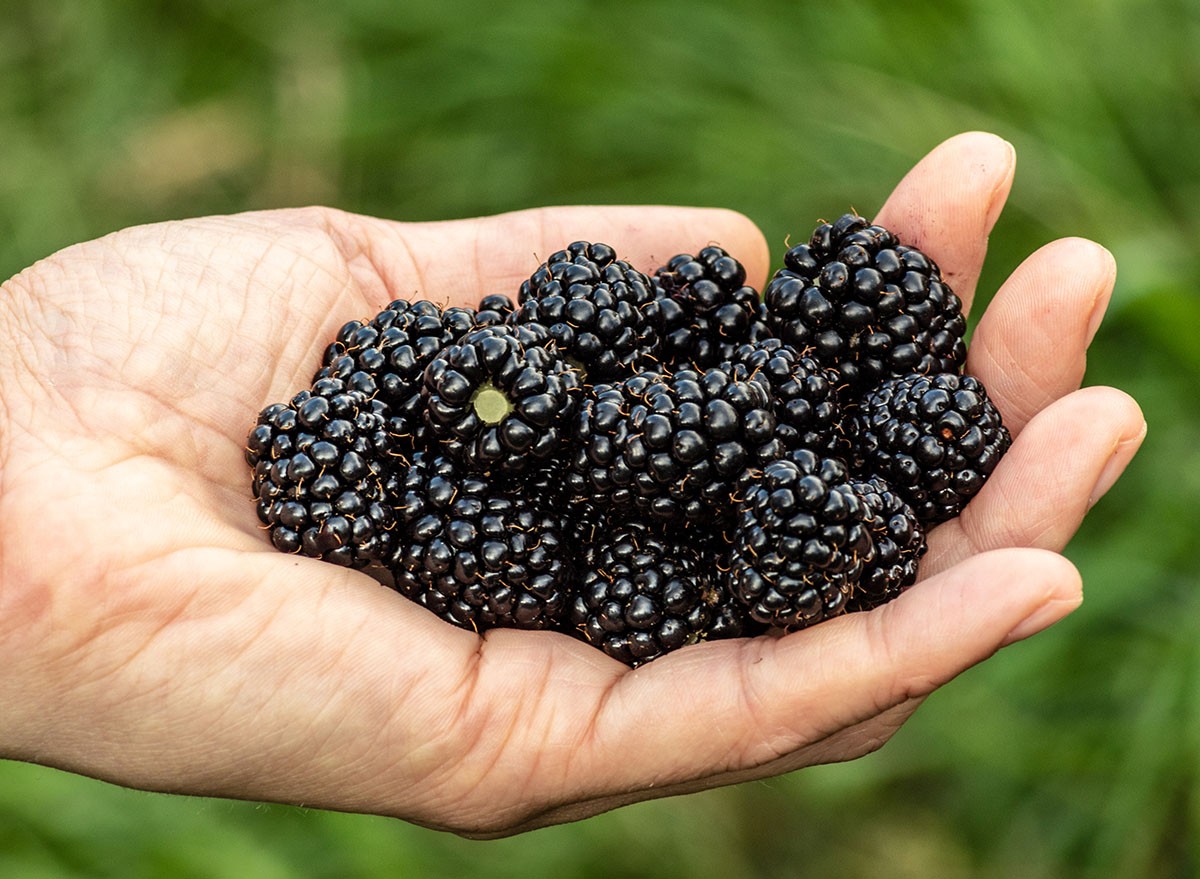8 Anti-Inflammatory Foods Experts Recommend for Joint Pain

It's common knowledge that several foods and drinks cause inflammation – sugar, alcohol, and processed foods included. However, you might not know that there are certain things you can eat that will help reduce inflammation and even improve joint pain. Body Network spoke to Dr. Gbolohan Okubadejo, a NYC area Spinal and Orthopedic Surgeon, who treats patients with inflammation-induced pain daily. Here are 8 anti-inflammatory foods he recommends to treat pain naturally.
Pineapple

Pineapple is helpful for those who suffer from osteoarthritis, according to Okubadejo. "The enzyme bromelain reduces inflammation and swelling," he says.
RELATED: 8 High-Protein Foods with Nearly Zero Calories That Melt Fat
Beets

Beets are another great anti-inflammatory food. "These substances contain betalains that can suppress inflammation-related enzymes and diminish oxidative stress within the body. The dietary nitrates in beets enhance blood flow and lower inflammation by boosting nitric oxide production which relaxes blood vessels and decreases cellular stress," he says.
Fatty Fish (Salmon, Mackerel, Sardines)

Two essential omega-3 fatty acids are abundant in fatty fish: Eicosapentaenoic acid (EPA) and Docosahexaenoic acid (DHA). "These omega-3s help inflammatory cytokines that cause inflammation, which occurs in conditions such as arthritis," he says. "Omega-3 fatty acids demonstrate effectiveness in managing rheumatoid arthritis symptoms through their ability to decrease both morning joint stiffness and swelling. COX-2 enzymes trigger inflammation in the same manner as nonsteroidal anti-inflammatory drugs (NSAIDs) function."
Berries (Blueberries, Strawberries, Blackberries)

Quercetin, a natural flavonoid with anti-inflammatory properties, is found in dark-colored berries, including blueberries, blackberries, and elderberries. "This substance functions as a natural antihistamine by diminishing inflammation and pain," says Okubadejo. It boosts immune function while combating damage from free radicals. Strawberries and black currants contain high amounts of vitamin C for collagen production. "Collagen synthesis depends on vitamin C because it plays a vital role in maintaining healthy joints and cartilage. This substance lowers oxidative stress which leads to increased joint pain and stiffness," he says.
RELATED: 20 Foods You Didn't Know Were Ultra-Processed
Leafy Greens (Spinach, Kale, Swiss Chard)

Spinach, kale, and Swiss chard contain high vitamin K levels, which lower inflammation markers while promoting healthy joints. "The greens supply vitamin C, which enhances collagen production to strengthen cartilage, and they contain beta-carotene with flavonoids that protect against oxidative stress and inflammation," he says. "Leafy greens provide magnesium, which assists in controlling inflammatory responses, and their fiber content enhances gut health, contributing to a reduction in systemic inflammation. The combination of these nutrients helps prevent stiffness and pain in the joints."
Nuts

Almonds, walnuts, and pistachios contain healthy fats, "including monounsaturated fats and omega-3 fatty acids that provide substantial anti-inflammatory benefits," says Okubadejo. "The consumption of these fats leads to reduced production of inflammatory molecules in the body, which helps alleviate joint pain and stiffness. Walnuts contain high levels of alpha-linolenic acid (ALA), a plant-based omega-3 fatty acid that research demonstrates can alleviate joint inflammation. Nuts include vitamin E, which functions as an antioxidant to shield cells against oxidative damage, thereby reducing joint pain and inflammation. Nuts contain fiber which helps maintain a healthy gut environment that enables the body to control systemic inflammation. Eating different kinds of nuts helps maintain healthy joints and lowers arthritis-related inflammation."
Olive Oil (Extra Virgin)

Extra virgin olive oil consists of abundant monounsaturated fats and oleocanthal, which possess potent anti-inflammatory capabilities, per Okubadejo. "These beneficial fats decrease the generation of pro-inflammatory substances such as cytokines and prostaglandin,s which commonly cause joint pain and stiffness," he says. Oleocanthal found in olive oil functions like NSAIDs to alleviate inflammation while avoiding their associated side effects. "Olive oil contains polyphenols, which act as antioxidants to shield joints from oxidative harm and prevent additional inflammation. Regular olive oil consumption helps alleviate joint pain while supporting mobility and enhancing joint health, particularly benefiting individuals with arthritis conditions."
RELATED: She Lost 75 Lbs by Eating These 3 Foods That "Mimic" the Effects of Ozempic
Ginger

The last anti-inflammatory food on his list is ginger. "People have relied on ginger as an anti-inflammatory root to relieve pain and inflammation for centuries. The root contains gingerol, which blocks inflammatory pathways in the body and reduces the production of enzymes and cytokines that cause joint pain and swelling," he explains. "Research shows that ginger can alleviate osteoarthritis and rheumatoid arthritis symptoms by lessening both pain and stiffness. The antioxidant properties work against oxidative stress that otherwise worsens joint inflammation. Ginger enhances blood flow, transporting nutrients to inflamed tissues to accelerate healing and support joint health. People who experience joint pain and inflammation can achieve substantial relief by regularly consuming fresh ginger, ginger tea, or ginger supplements." And if you enjoyed this article, take advantage of these 15 Quick Ways to Lose Body Fat Percentage in a Week.




